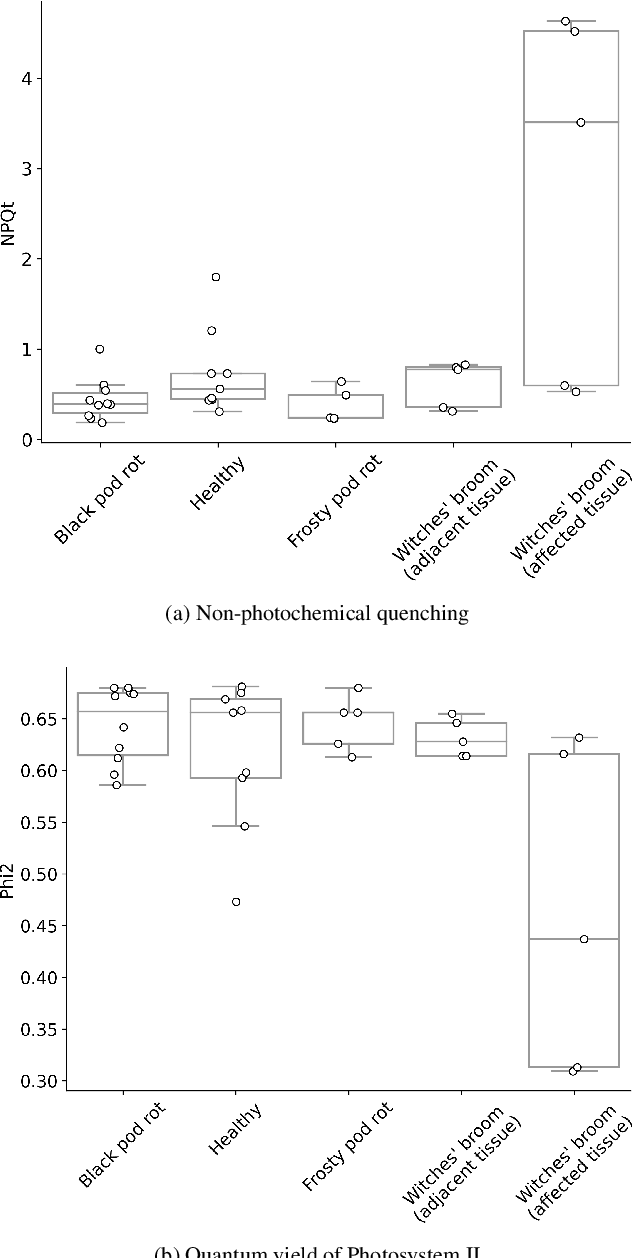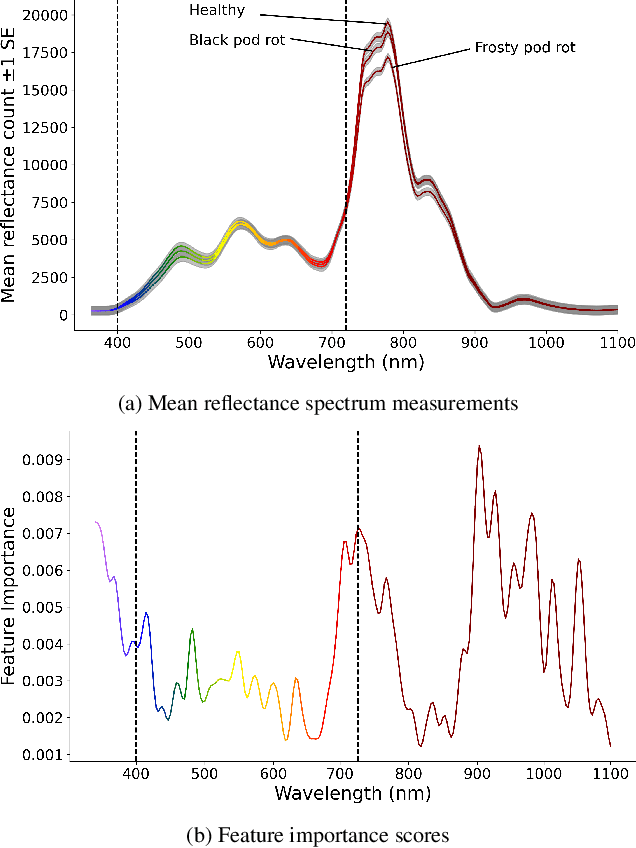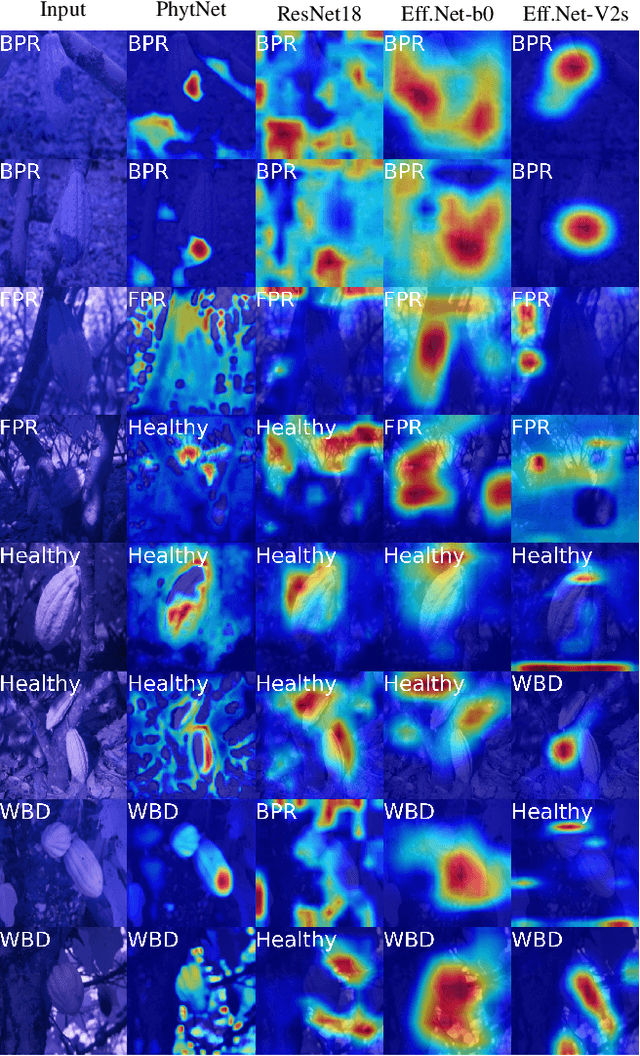PhytNet -- Tailored Convolutional Neural Networks for Custom Botanical Data
Paper and Code
Nov 20, 2023



Automated disease, weed and crop classification with computer vision will be invaluable in the future of agriculture. However, existing model architectures like ResNet, EfficientNet and ConvNeXt often underperform on smaller, specialised datasets typical of such projects. We address this gap with informed data collection and the development of a new CNN architecture, PhytNet. Utilising a novel dataset of infrared cocoa tree images, we demonstrate PhytNet's development and compare its performance with existing architectures. Data collection was informed by analysis of spectroscopy data, which provided useful insights into the spectral characteristics of cocoa trees. Such information could inform future data collection and model development. Cocoa was chosen as a focal species due to the diverse pathology of its diseases, which pose significant challenges for detection. ResNet18 showed some signs of overfitting, while EfficientNet variants showed distinct signs of overfitting. By contrast, PhytNet displayed excellent attention to relevant features, no overfitting, and an exceptionally low computation cost (1.19 GFLOPS). As such PhytNet is a promising candidate for rapid disease or plant classification, or precise localisation of disease symptoms for autonomous systems.
 Add to Chrome
Add to Chrome Add to Firefox
Add to Firefox Add to Edge
Add to Edge